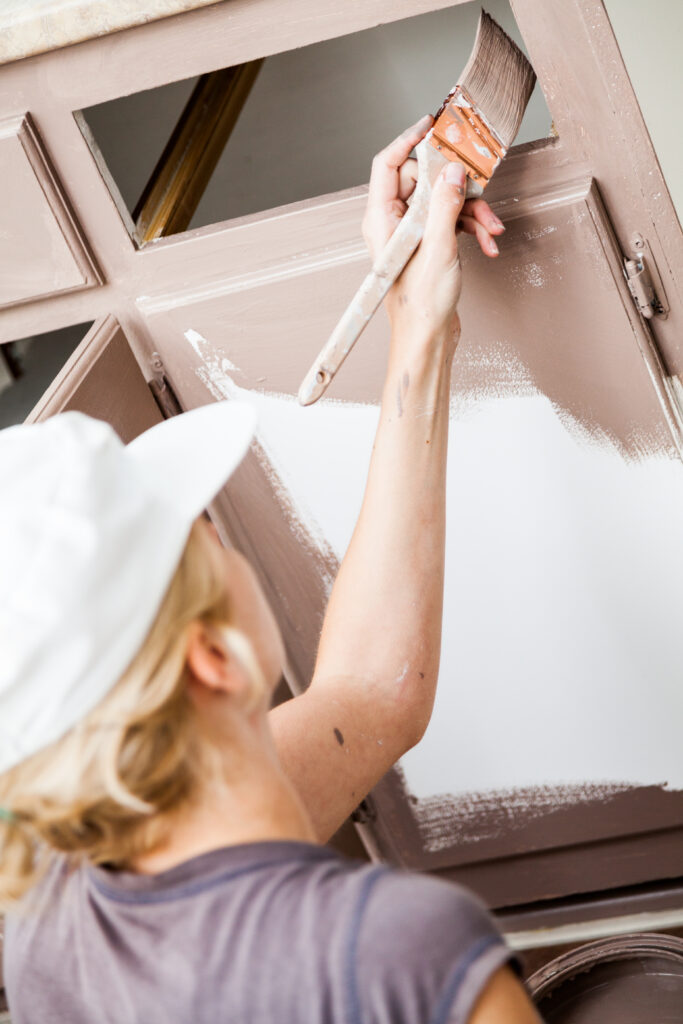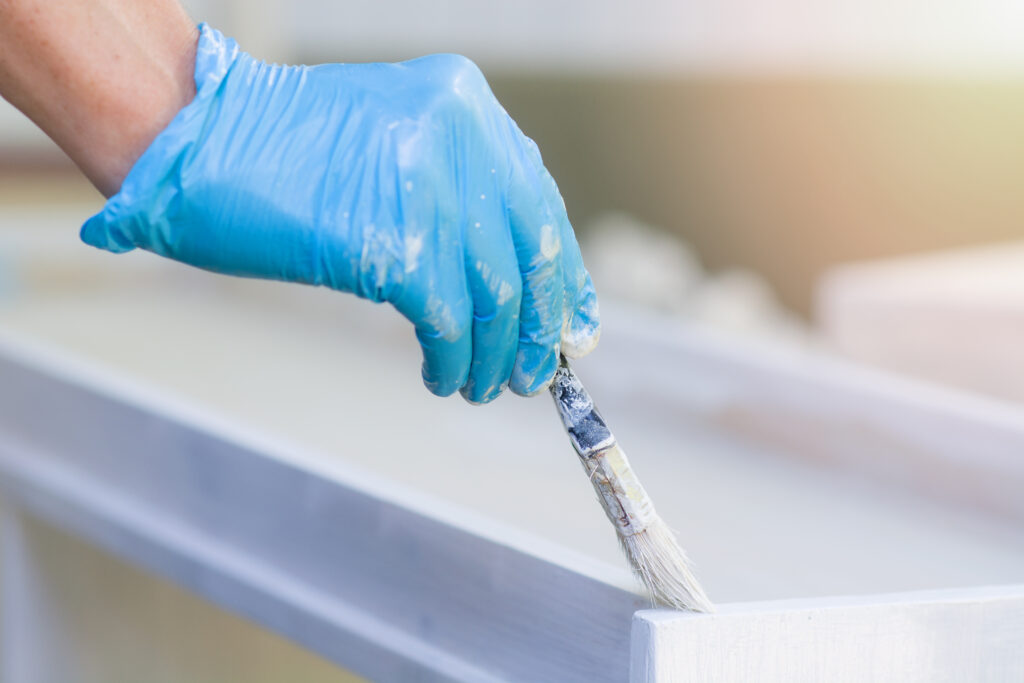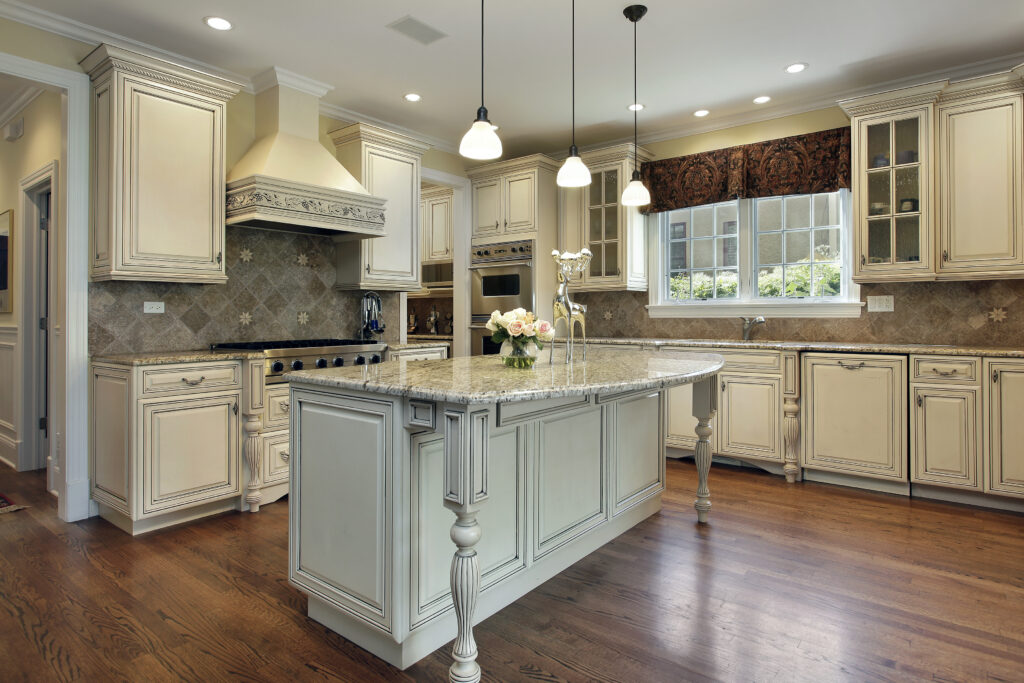Treating your cabinets to a fresh coat of paint is one of the cheapest and easiest ways to update a room. When done properly, the effect is striking and the results long-lasting. That being said, it is very important to do the job correctly. If you have been thinking about painting cabinets in your bathroom or kitchen, here are a few things you should know.

Is Painting Cabinets a Good Idea?
There are many benefits to painting cabinets, but there are also several risks involved, and it is wise to know about them before beginning. Paint will not repair wood or particle board that is damaged, and it doesn’t adhere well to the damaged materials anyway. If your cabinets are old, frail, sagging, peeling, or delaminating, consider replacing them before you paint.
More surface-level issues can be resolved before paint is applied this includes filling dents or holes with wood filler or caulking recessed panels or doors. This latter should be done anyway before painting to make cracks along panel edges less visible after the paint goes on. You should also be aware that cabinet joints may separate over time, which will be more obvious if your cabinets are painted. This is true of dents, dings, and scratches as well.

What Should You Know Before Painting Your Cabinets?
The painting cabinets process begins long before you pull out the brush. Consider these suggestions to have the best results:
- Properly prepare your cabinets for painting (more on this below).
- Prepare your space for painting. This includes putting tarps or canvas underneath your cabinets as you paint them, covering the floor of your home to keep dust spread and dripping to a minimum, and covering and taping off countertops and appliances.
- Protect yourself when you paint by wearing eye protection and a mask.
- Have a well-ventilated place prepared before you start where your cabinets can dry. Make sure this is out of the way, where no one will brush up against them and compromise the paint job.
- Only paint in well-ventilated areas.
- Use the right kind of paint on your cabinets. We recommend acrylic over vinyl because acrylic is hardy and easy to clean up.
- Be mindful of your finish. It is common to use a semi-gloss or satin finish on kitchen cabinets. If you want a very modern appearance, you might consider a high-gloss finish, but you should be aware that while these hold up well, they also make dents and dings very apparent.
- Apply a layer or primer before painting your cabinets.
A Word on Primer
Primer prepares the cabinet to be painted by creating a surface to which the paint can adhere. It seals the material the cabinet is made of, glosses over imperfections, and mitigates staining. If you want your paint job to last, especially on cabinets that see a lot of use, applying primer is the best way to set yourself up for success.
There are few broad types of primer, the most common being shellac, latex, or oil-based. You will likely only need one coat unless the paint you are adding afterwards is of a very different color from the cabinets (or previous paint job) underneath. Make sure your primer is completely dry—nice and hard—before you start painting cabinets in earnest.

How do you prepare cabinets for painting?
Preparing cabinets for paint is a process. After you have selected the color and kind of paint you prefer and have prepared painting and drying areas, it’s time to get to the cabinets themselves. You’ll need to remove all drawers, doors, and hardware. Be systematic about this, labeling where each of the doors and drawers should return and keeping all the hardware with the right units. Splitting the cabinets into the basic components means you don’t have to do as much taping or cautious painting.
You will also need to get each cabinet ready for paint. If you want to stain instead of paint or if your cabinets have a previous layer of chipping paint, you’ll need to strip them of old paint. This is usually best accomplished by sanding. Even if you don’t need to remove only paint, sanding with a medium-grit sandpaper is still a good idea. It gives the paint something to adhere to, and sanding can be easily accomplished with an electric sander.
Once you’ve sanded off your cabinet’s glossy varnish, you’ll need to make sure they are completely clean. Painting cabinets when they are dirty traps in dirt, debris, and even mold and bacteria. Give the cabinets around the stove, microwave, and sink a bit of extra care. Once you have done all this, you are ready to start painting your cabinets!



CONTACT US: 801.797.0345